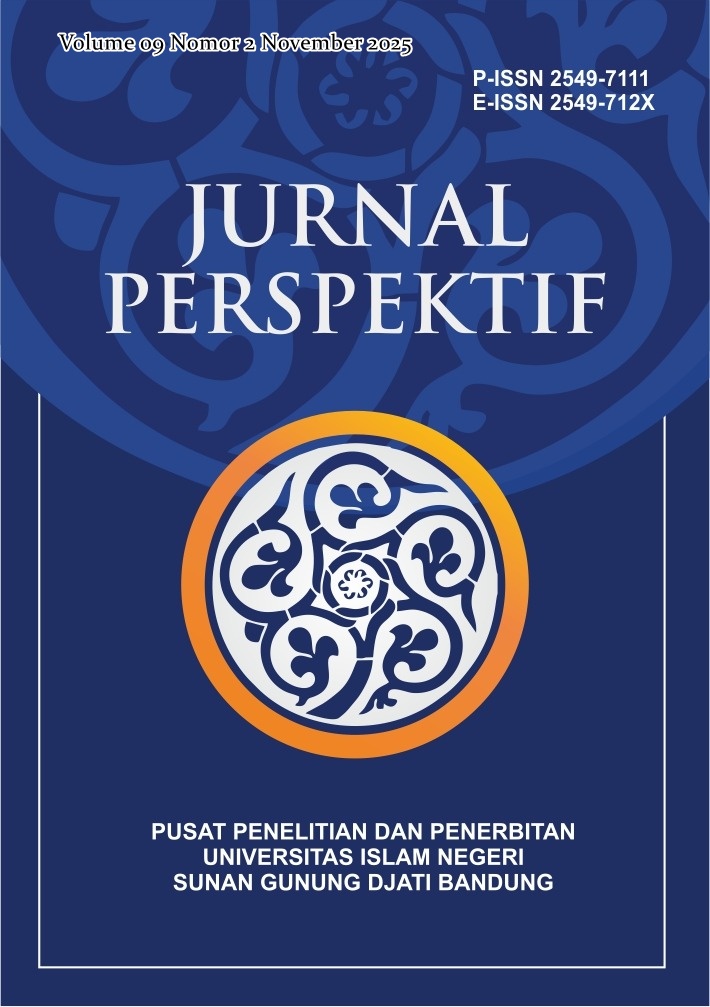Analyzing Students' Deductive Reasoning and Problem-Solving Skills in Algebraic Derivatives: The Role of Adversity Quotient (AQ)
DOI:
https://doi.org/10.15575/jp.v9i2.379Keywords:
Deductive Reasoning, Problem Solving, Adversity QuotientAbstract
The purpose of this study was to analyze and describe the use of deductive reasoning and mathematical problem solving skills based on Adversity Quotient (AQ). The type of research used is qualitative descriptive research. The instruments in this study were deductive reasoning and problem solving ability test questions, and AQ questionnaires. The number of respondents in the study was 20 students. Respondents were divided into three types, namely Quitter, Camper, and Climber. The results showed that students with the Quitter type were only able to make calculations based on rules/formulas, but had not been able to draw conclusions and compile direct proof steps so that the problem solving indicators had not been achieved optimally. Students with the Camper type were able to make calculations based on rules or formulas, and were able to plan and implement plans in the problem solving aspect. Students with the Climber type were able to meet all indicators of deductive reasoning and problem solving in understanding problems, planning, implementing plans, and re-checking
References
Alhusna, C. (2020). Menemukan Pola Perkalian Dengan Angka 9. Jurnal Pendidikan Dan Pembelajaran Terpadu, 2(1), 55–70.
Amir, M. F. (2015). Proses Berpikir Kritis Siswa Sekolah Dasar Dalam Memecahkan Masalah Berbentuk Soal Cerita Matematika Berdasarkan Gaya Belajar. Jurnal Math Educator Nusantara: Wahana Publikasi Karya Tulis Ilmiah Di Bidang Pendidikan Matematika, 1(2), 159–170.
Baroody, A. J. (2017). Problem Solving, Reasoning and Communicating, K-8. Macmillan Publishing Company.
Branca, N. . (2017). Problem Solving as a Goal, Process, and Basic Skill. NCTM.
Fadillah, A. (2019). Analisis Kemampuan Penalaran Deduktif Matematis Siswa. Jurnal Teori Dan Aplikasi Matematika (JTAM), 3(1), 15–21.
Hidayat, W., & Sariningsih, R. (2018). Kemampuan Pemecahan Masalah Matematis dan Adversity Quotient Siswa SMP Melalui Pembelajaran Open Ended. Jurnal JNPM (Jurnal Nasional Pendidikan Matematika), 2(1), 109–118.
Hr, B. (2020). Kemampuan Penalaran Deduktif Matematis Siswa MA NW Kabar Berdasarkan Sintaks Modeling The Way. Media Pendidikan Matematika, 8(1), 87–96.
Manyira, M., Saidi, S., & Hamid, H. (2021). Analisis Kemampuan Penalaran Deduktif Matematis Siswa SMP Dalam Menyelesaikan Masalah Pertidaksamaan Linear Satu Variabel. Urnal Pendidikan Guru Matematika, 1(3), 260–270.
Mawarni Nehe, Pargaulan Siagian, M. (2017). The Development Of Learning Device Based Contextual Teaching Learning (CTL) Assisted Autograpg To Improve The Ability Of Problem Solving Mathematics Class X SMA Negeri 1 Telukdalam. Jornal of Education and Practice, 8(19), 108-117.
Miles, B. M., Huberman, M. A., & Saldana, J. (2014). Qualitative data analysis: a methods sourcebook third edition. SAGE Publications Asia-Pacific Pte, 30(25), 33.
Minarni, A. (2017). On Eight Grade Students Understanding in Solving Mathematical Problems. Asian Social Science, 13 (12), 86–96. https://doi.org/10.5539/ass.v13n12p86.
Moleong, L. J. (2017). Metode Penelitian Kualitatif. PT.Remaja Rosdakarya Offset.
Mulyani, E. (2019). Adversity Quotient Mahasiswa Pendidikan Matematika dan Keterkaitannya dengan Indeks Prestasi Kumulatif Mosharafa. Mosharafa: Jurnal Pendidikan Matematika, 8(1), 119–130.
Polya, G. (1973). How To Solve It. A New Aspect of Mathematical Method. Stanford University.
Rahayu, I. F., & Aini, I. N. (2021). Analisis Kemandirian Belajar dalam Pembelajaran Matematika pada Siswa SMP. JPMI – Jurnal Pembelajaran Matematika Inovatif, 4(4), 789–798.
Rahayu, N., & Alyani, F. (2020). Kemampuan Berpikir Kritis Matematis ditinjau dari Adversity Quotient. Prima: Jurnal Pendidikan Matematika, 4(2), 121–136.
Roswanti, dkk. (2020). Kemampuan Pemecahan Masalah Siswa Berkemampuan Matematis Rendah pada Pembelajaran Creative Problem Solving. Jurnal Imajiner, 2 (3), 191–201.
Rusdewanti, Panca Putri, dan A. G. (2014). Pengembangan Media Pembelajaran Interaktif Seni Musik Untuk Siswa SMP. Jurnal Inovasi Teknologi Pendidikan, 1(2), 153-164.
Saputra, E., & Zulmaulida, R. (2021). Analisis Kemampuan Penalaran Deduktif Pembelajaran Creative Problem Solving ( CPS ) Siswa pada. Suska. Journal of Mathematics Education, 7(2), 113–122.
Saragih, S., & Habeahan, W. (2014). The Improving of Probem Solving Ability and Students’ Creativity Mathematical by Using Problem Based Learning in SMP Negeri 2 Siantar. Journal of Education and Practice, Vol. 5. No, 123-132.
Sarah, R., & Iskandar, F. (2017). Pengaruh Adversity Quotient Terhadap Kemampuan Matematika Pada Mata Kuliah Teori Bilangan. Prima: Jurnal Program Studi Pendidikan Dan Penelitian Matematika, 6(1), 21–32.
Sarwono, E.,Yusmin, E., Suratman, D. (2018). Pengaruh Model Pembelajaran Kooperatif Tipe STAD Terhadap Kemampuan Pemecahan Masalah Dan Motivasi Belajar Siswa SMP. Jurnal Pendidikan Dan Pembelajaran Khatulistiwa, 7(5).
Siagian, S. S., Mujib, A., & F. (2024). The role of concept image in constructing mathematical proof. AIP Conference Proceedings, 3(1), 41.
Usman, M. R., & Syam, N. (2022). Profil Kemampuan Pemecahan Masalah Matematika Siswa Ditinjau Dari Adversity Quotient. Jurnal Program Studi Pendidikan Matematika, 11(2), 1039–1051.
Winarso, W. (2018). Membangun Kemampuan Berfikir Matematika Tingkat Tinggi Melalui Pendekatan Induktif, Deduktif Dan Induktif-Deduktif Dalam Pembelajaran Matematika. Duma : Mathematics Education Learning and Teaching, 3(2), 95–118.
Downloads
Published
How to Cite
Issue
Section
Citation Check
License

This work is licensed under a Creative Commons Attribution-ShareAlike 4.0 International License.
Authors who publish in Jourrnal Perspektif agree to the following terms:- Authors retain copyright and grant the journal right of first publication with the work simultaneously licensed under a Attribution-ShareAlike 4.0 International (CC BY-SA 4.0) License that allows others to share the work with an acknowledgment of the work's authorship and initial publication in this journal.
- Authors are able to enter into separate, additional contractual arrangements for the non-exclusive distribution of the journal's published version of the work (e.g., post it to an institutional repository or publish it in a book), with an acknowledgment of its initial publication in this journal.
- Authors are permitted and encouraged to post their work online (e.g., in institutional repositories or on their website) prior to and during the submission process, as it can lead to productive exchanges, as well as earlier and greater citation of published work (See The Effect of Open Access).



